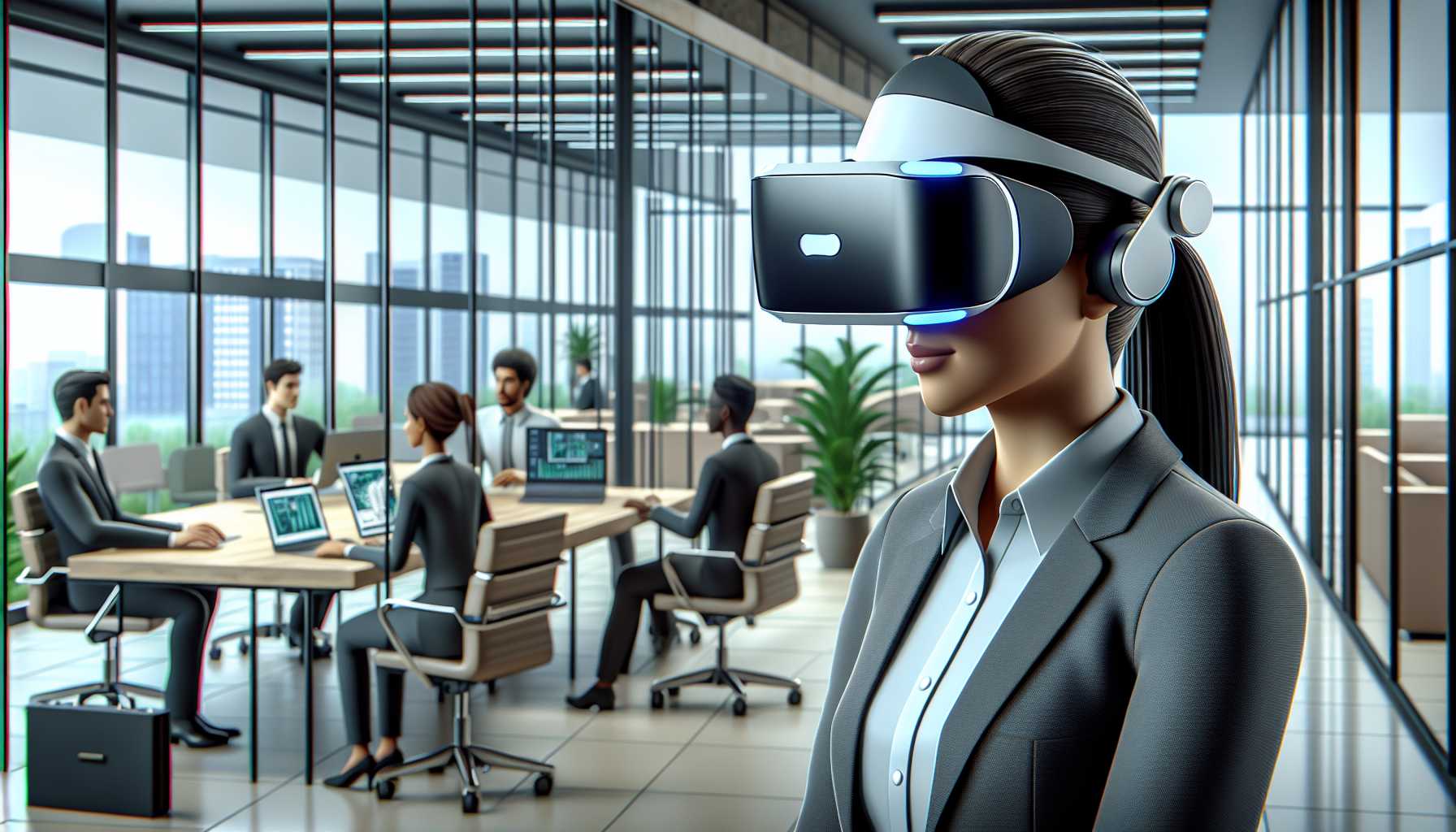Apple Vision Pro: The Game-Changer in Enterprise Mainstream?
In the vast ocean of techno-jargon and futuristic devices, a colossal wave has just hit the shores—Apple Vision Pro (AVP). Apple, a name synonymous with innovative disruption, launched the AVP with the fanfare it deserved, perhaps changing the virtual game in enterprises. Spatial computing, or as you and I would call it, mixed reality, has had its fair share of spotlight moments, but often it fizzled out like a passing fad. Today, let’s dive deep into whether Apple’s latest marvel has the mettle to turn the tides.
The AVP tantalizes with immersive training, collaborative designs, and an ‘infinite desktop’ which makes you wonder if you’ve stepped into the realms of science fiction. It has positioned itself not just as a progeny of augmented and virtual realities but as the patriarch of its own category—spatial computing. And with Tim Cook’s assurances of enterprise eagerness, this might just be the start of a new chapter where ‘real estate’ finds a whole new meaning in the digital palette.
Apple’s approach to keep you connected to your surroundings while a digitized reality dances before your eyes, all wrapped in a familiar intuitive interface, screams of a masterstroke. It breaks the barrier of isolation that previous devices suffered from and paves the way for boundless applications, both in our homes and our workplaces.
The Evolution of AI: A Market on the Rise
Switching gears from spatial computing, the spotlight also fiercely shines on artificial intelligence (AI). AI stocks have performed a tango with investor sentiments, oscillating between skepticism and fervor. But one thing’s crystal clear: AI’s presence is imminent across all walks of our lives, and investors are noticing. From Alphabet’s Gemini to IBM’s watsonx, an AI boom is upon us—and it’s big.
The semiconductor market, the unsung hero of the tech world, is forecasted to kiss the $1 trillion mark by 2030, owing majorly to AI’s appetite. Companies like Nvidia, Advanced Micro Devices (AMD), and Taiwan Semiconductor Manufacturing are carving their names onto the podium of this race. Each, in its unique stride, is contributing to an AI-powered future where traditional computing seems quaint. But wait—let’s not count out IBM, a stalwart in the tech arena. With its commendable leap into AI with watsonx and a string of cloud acquisitions, IBM isn’t just joining the race; it’s turbocharging it.
The Infrastructure Behind AI: Semiconductor’s Gilded Age
Nvidia’s stock trajectory is one for the textbooks. Boasting 219% growth in the past year, it mirrors the clout AI and semiconductors hold in today’s tech landscape. Nvidia’s mastery in AI chips puts it at the pole position in this sector’s race. However, it’s not alone at the start line. History tells us, where there’s a gold rush, the smart thinker doesn’t just mine for gold; they sell the shovels. Enter companies like ASML and Applied Materials, the pick and shovel providers of the semiconductor flux. While Nvidia is out front, sowing GPUs like seeds in a field of burgeoning demand, ASML maintains its stealth with a technological monopoly that’s just hard to overlook. The fact that companies no matter what AI model they produce, would need the bedrock these semiconductor giants provide is a thought that just can’t be siliconed away.
Nvidia Leaps Into Custom Chip Design: A Calculated Bet?
Nvidia graces headlines again, but this time, it’s stepping into a sandbox traditionally not its own—custom chip design. The idea isn’t just to protect its throne in AI chips but to sculpt out a fortress where it can reign over a myriad of applications, from cloud computing to gaming and beyond. With projections of the custom chip market to scale new heights by 2025, Nvidia’s pursuit isn’t just a flirt with opportunity—it’s a strategic romance. Diversification is king in technology’s fast-paced waltz, and Nvidia, with its own dedicated unit for custom chips, seems to have a firm grip on its partner’s waist.
AI: The Silver Bullet or Environmental Culprit?
AI, for all its glory, brings along a daunting shadow—environmental impact. Experts ring the bells of caution, pointing out the potentially monumental resource requirements an AI-fueled future would demand. The sustainability of this trajectory is a conversation not to be shelved. And yes, transparency in these energy-consumptive processes is as paramount as the technology itself. As we navigate the maze of technological wonders, we face questions of ecological conscience and efficiency. This narrative merits as much spotlight as the one celebrating AI’s accolades because, after all, every byte and every chip carve their impact into the planet we call home.
In the transformative milieu of AI and spatial computing, one truth remains—technology is not just a sprint; it’s a marathon, with each stride meticulously calculated and each breath harmoniously synced with demand’s rhythm. Apple Vision Pro, AI’s stock ascend, and Nvidia’s zestful plunge into custom chip design are but waypoints in this marathon—one that we’re all a part of, as participants or as spectators. The finish line? Always just around technology’s next curve.





